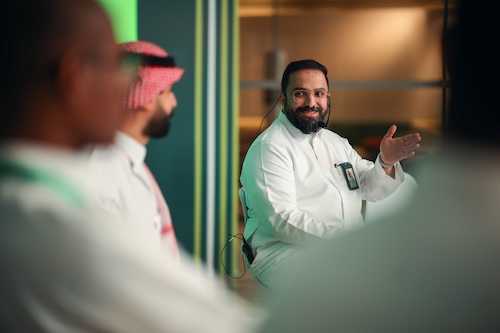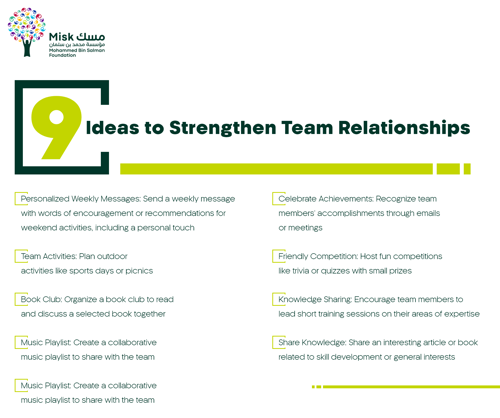
In a technology-driven world where remote work has become the norm, the concepts of leadership have radically transformed. Leadership is no longer merely about physical presence, sitting among the team, personally overseeing tasks, and issuing orders and directives. Instead, it has evolved to rely on a combination of influence, trust, and innovation. In our current era, leaders face a pivotal question:
How can you effectively lead your team while being separated by screens and wires?
Remote leadership is not a new challenge imposed by the digital workplace; rather, it presents an opportunity to innovate a creative approach that leverages digital tools, open communication, and greater flexibility between leaders and their teams. This article will explore digital leadership and how leaders can build strong relationships with their teams and achieve goals without the need for physical presence or constant oversight.
What does it mean to lead a team without being seen?
Leading a team without being seen means building strong communication based on support and trust, rather than relying on physical presence or a leadership style that makes the team feel your presence even in your absence. It involves empowering the team to take responsibility for their assigned tasks and strive to accomplish them without the need for constant guidance or supervision. Digital leadership highlights managers' and leaders' abilities to motivate and inspire their teams through intelligent and effective communication tools, clear action plans, and a deep belief in their team members' potential.
What distinguishes this leadership style is the shift from direct control to team empowerment. The focus shifts from procedures to results and encourages individuals to make independent decisions to accelerate work and achieve desired goals. Since this transition requires a strong foundation, the first step to success in remote leadership begins with: Trust.
The Role of Trust Between Leaders and Teams
Trust is the foundation upon which everything in leadership is built. When team members trust their leader, they become more committed, creative, and willing to put in effort, contribute more, and sustain their contributions. However, trust is not something that can be acquired or built quickly; it is a cumulative result constructed through clear, consistent actions and ongoing efforts in effective communication with team members. The question remains: how do we build trust?
The answer lies in transparency, clarity, and human communication. A leader must clearly define their goals, be honest about the challenges they face, and follow through on the small promises they make to team members. These behaviors demonstrate to the team that their leader is dependable and that they are working with a balanced, transparent individual. Over time, these simple actions become a solid foundation that the leader and team can rely upon.
However, trust alone is not sufficient; it needs to be nurtured by strong relationships that make the team feel like more than just coworkers. This leads us to:
Building Relationships that Transcend Tasks
Trust is built through actions and behaviors, but relationships blossom through care and attention. The robust relationship between a leader and team members is an essential foundation for genuine collaboration, shared creativity, rich discussions, and practical initiatives. When a leader recognizes that the team is not just a group of employees carrying out assigned tasks, but individuals with their own needs, goals, and distinct personalities, they lay the cornerstone for a strong human and fraternal bond with their team.
A leader who communicates with their team members as "people" rather than just "employees" succeeds in creating an environment where everyone feels a sense of belonging and appreciation. This feeling not only positively impacts performance but also increases team loyalty, as they realize they are not merely tools for accomplishing work but valued partners within the organization.
But how can a leader foster this relationship? The answer lies in the small details that recur daily! For example, inquiring about personal matters, even in a simple way like asking about family and their well-being or inquiring about children and their studies. This type of conversation can create a profound sense of care. Celebrating personal successes, such as graduation ceremonies, the arrival of a new child, or individual achievements, and interacting with and sharing in employees' joy over their personal accomplishments demonstrates an appreciation for the human side of the team member, not just their professional efforts. This significantly helps strengthen the relationship between the leader and team members.
Here are 9 ideas that can be used and implemented to enhance human relations with the work team:

In conclusion, this journey is not just a series of ideas or simple steps, but rather an ongoing commitment that requires the mental and emotional presence of the leader to manage work teams intelligently and humanely. Over time, this relationship will bear fruit in an inspiring work environment that encourages innovation, removes barriers between the leader and his team members, and makes work not just a duty, but a shared passion and commitment to which everyone contributes.